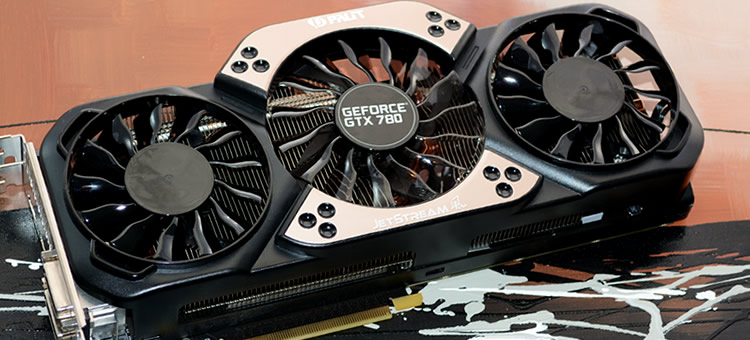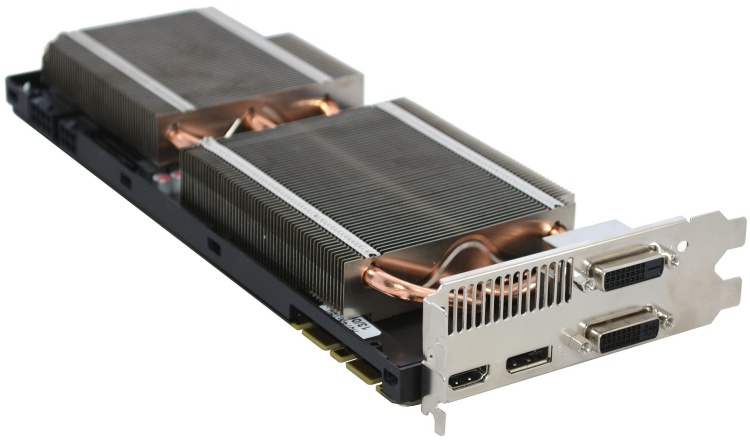Armed with 2688 stream processors and 7.1 billion transistors, the GeForce GTX Titan set a new bar for GPU performance last March. The Titan's 384-bit memory bus is good for a staggering 288.4GB/s memory bandwidth – 50% more than the GTX 680. Being in a master class of its own, the GTX Titan may be a niche product, but it's a niche product that can manhandle other top single-GPU cards and that's enough to get our attention.
A few months after releasing its $1,000 heavyweight, Nvidia unveiled a slightly cut down version as the GTX 780, which still features 7.1 billion transistors and a 384-bit bus though fewer stream processors and TAUs – changes that made the card around 14% slower and 35% cheaper than the GTX Titan.
Traditionally, AMD and Nvidia board partners have boosted the performance of most GPUs by 5-10% via overclocking, so we fully expected one of them to take a stab at closing the meager 14% gap separating the GTX 780 and Titan. Palit has answered the bell with its GTX 780 Super JetStream, which is clocked 14% higher than usual at 980MHz with a 1033MHz boost, up from 863MHz and 902MHz.
We've only previously seen water-cooled GTX 780 cards pushed this far, while most air-cooled solutions have maxed out at around 960MHz, at least as far as factory overclocking has been concerned. However the GTX 780 Super JetStream is no ordinary graphics card, as its massive heatsink and three large fans keep its core cool when under stress – a solution that allows the card to outpace the Titan, Palit says.
GTX 780 Super JetStream
The GTX 780 reference board measures 10.5" long (26.7cm) and the GTX 780 Super JetStream is slightly longer due to the upgraded cooler which stretches to 11" (28cm). The display outputs remain standard including two dual-link DVIs, one HDMI and one DisplayPort connector.
With 2304 CUDA cores at its disposal, the GTX 780 features 50% more cores than the GTX 680 while its 3GB memory buffer standard is also 50% greater than the GTX 680. Six 64-bit memory controllers make up a 384-bit wide bus and Nvidia's specification pairs the GPU with GDDR5 memory clocked at 6008Mhz which provides up to 288.4GB/sec of peak memory bandwidth. Palit has upgraded this specification to 6200MHz, allowing for a memory bandwidth of 297.6GB/s, a mild 3% increase.
The 12 SMX units providing 2304 CUDA cores are clocked at 863MHz by default, though using Boost 2.0 they can be clocked up to 902MHz in certain scenarios. The second-gen GPU Boost technology works in the background, dynamically adjusting the GPU's graphics clock speed based on operating conditions.
This is where Palit has made the biggest performance changes, increasing the base clock to 980MHz, while the boost clock exceeds 1GHz at 1033MHz. This 14% overclock should be enough to deliver Palit's claims of Titan-like performance. Palit's massive triple fan cooler keeps the GTX 780 cool at these frequencies, featuring three fans in an 80mm, 90mm, 80mm configuration to pump as much air over the heatsink while generating as little noise as possible.
Palit used its TurboFan Blade technology, which they say is inspired by the power of jet engines and improves cooling performance by generating a powerful air stream and air pressure.
Three fans are required because Palit has gone with a gargantuan heatsink, or rather heatsinks. A series of heatpipes are connected to a huge copper base to quickly transfer heat away from the bottom and up through a series of fins. There are two large heatsinks spanning 20cm x 9cm x 2.5cm, offering a massive area for heat dispersal.
There is also a large aluminum heat spreader covering the front side of the card that is designed to keep the GDDR5 memory chip and the 8-Phase PWM cool. Palit says it uses a unique 8-Phase PWM design that reduces maximum current load for each phase to stabilize the voltage level and improve overclocking ability. This design also provides an additional 30% current capacity that no doubt aids the overclocking process.
The external power configuration is the same as a standard GTX 780, meaning you will find a single 8-pin along with a 6-pin connector. The GTX 780 Super JetStream has been given a TDP rating of 250 watts, which is 28% greater than the GTX 680, so Nvidia recommends using a 600W power supply.





